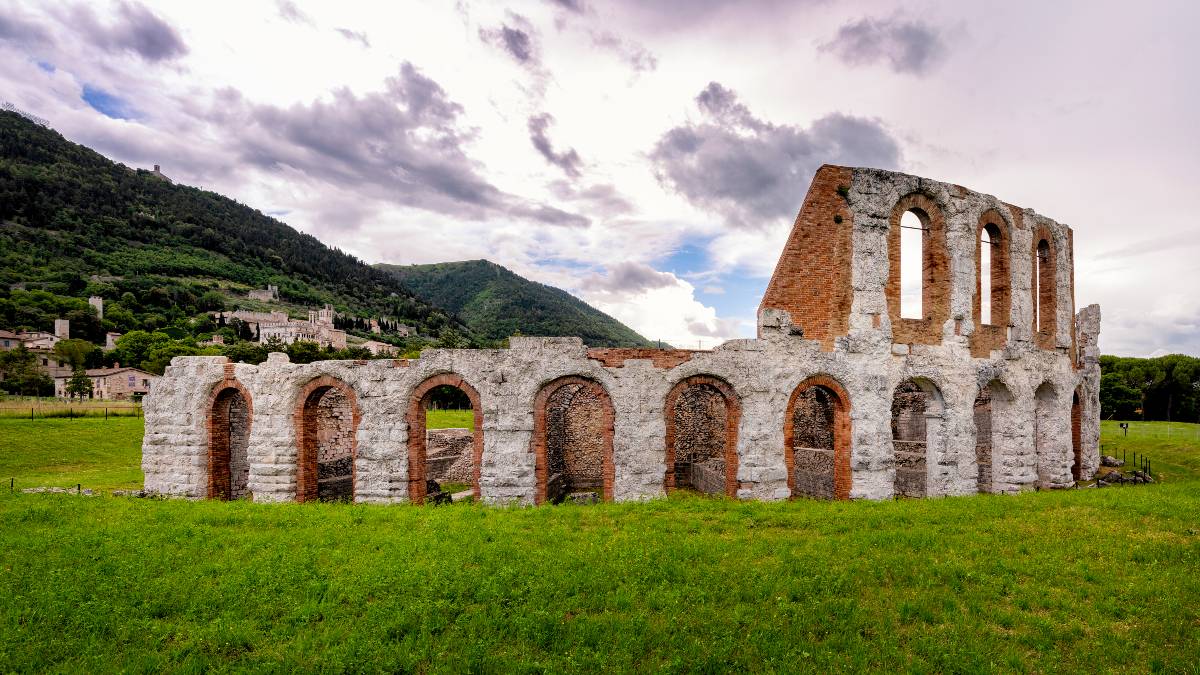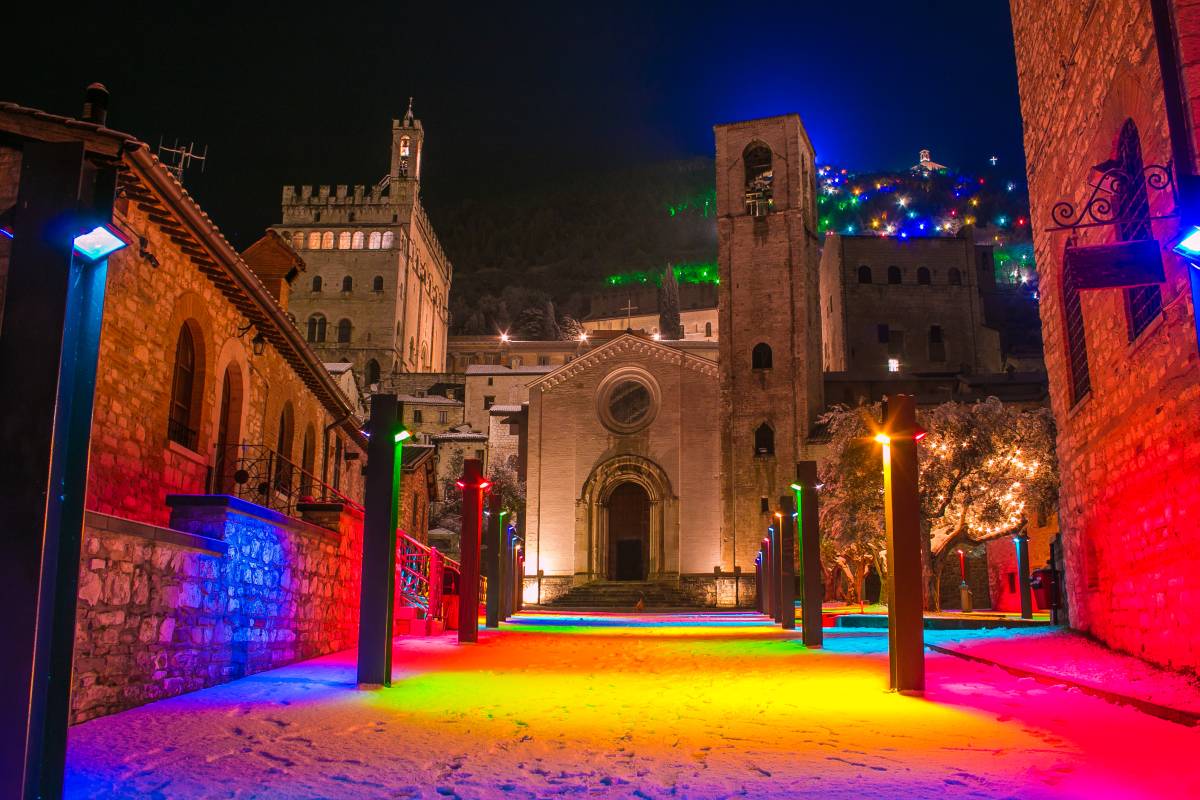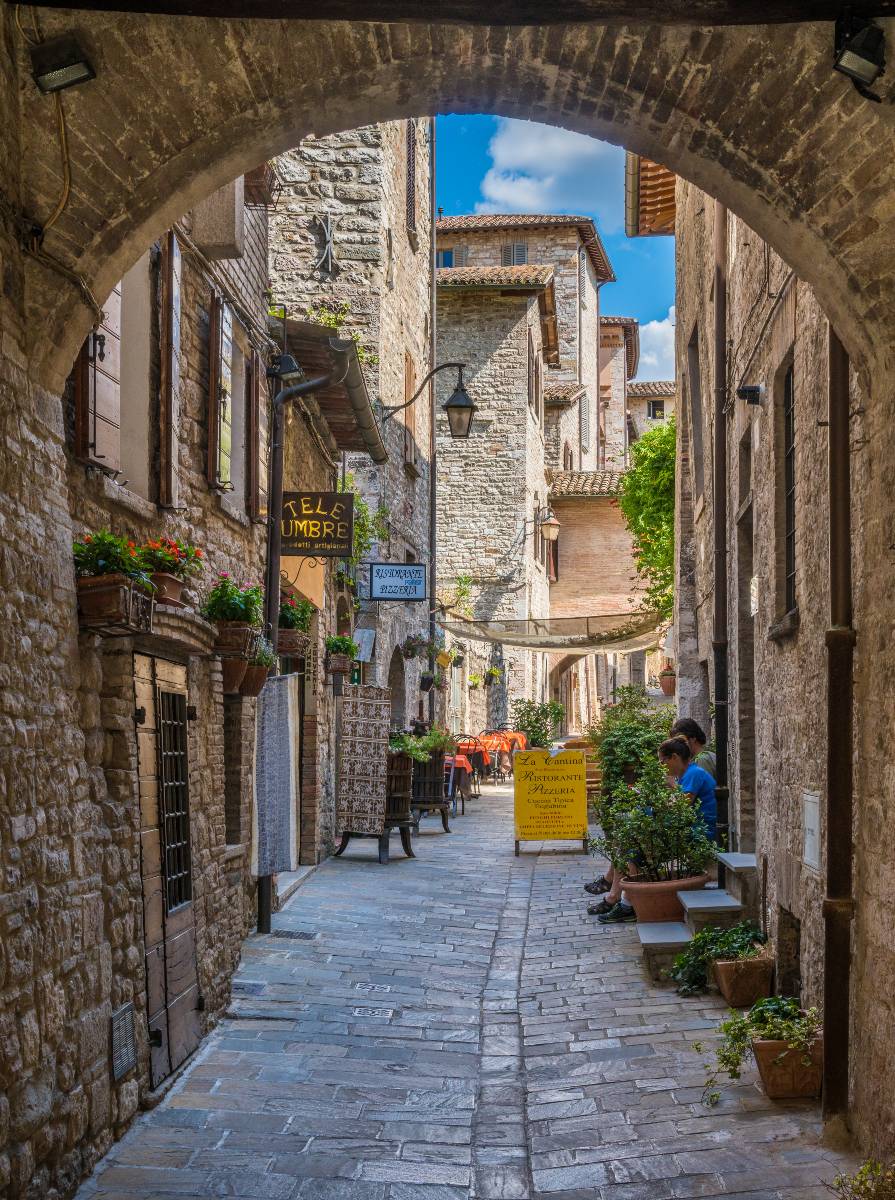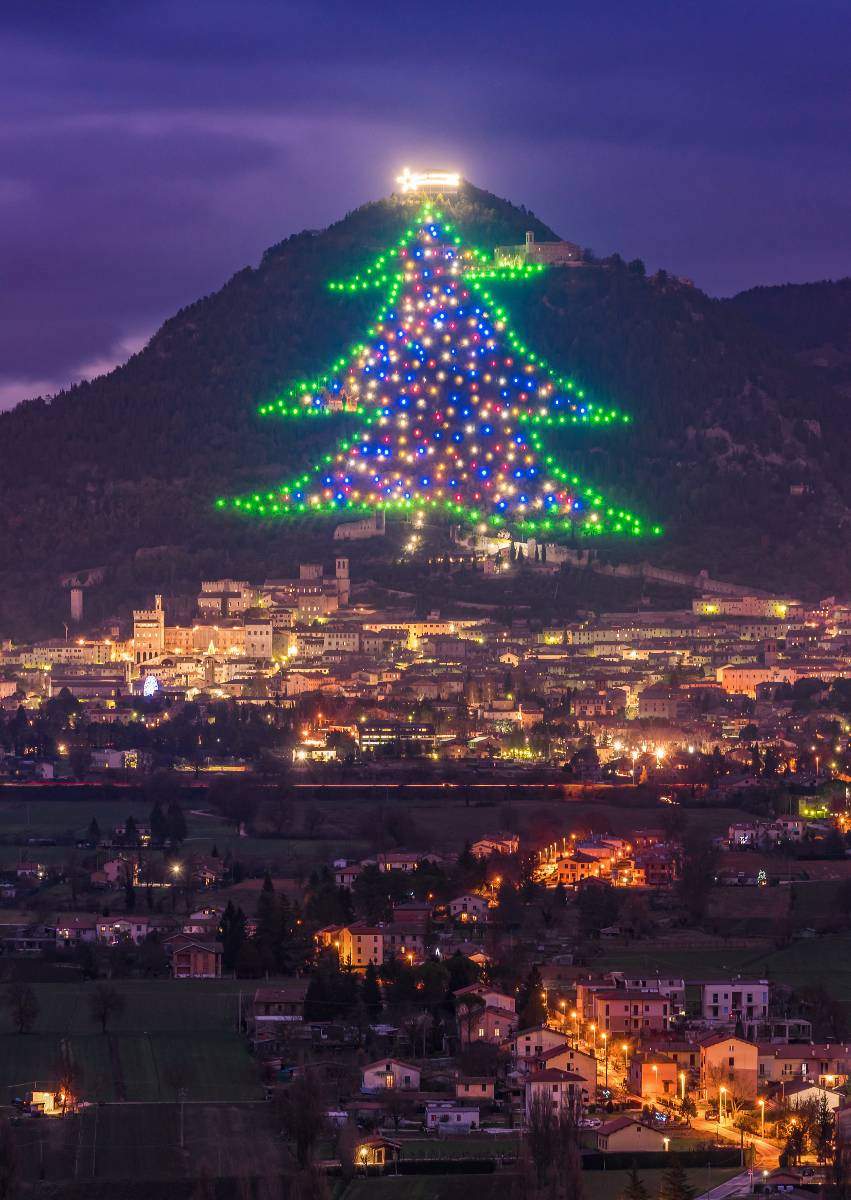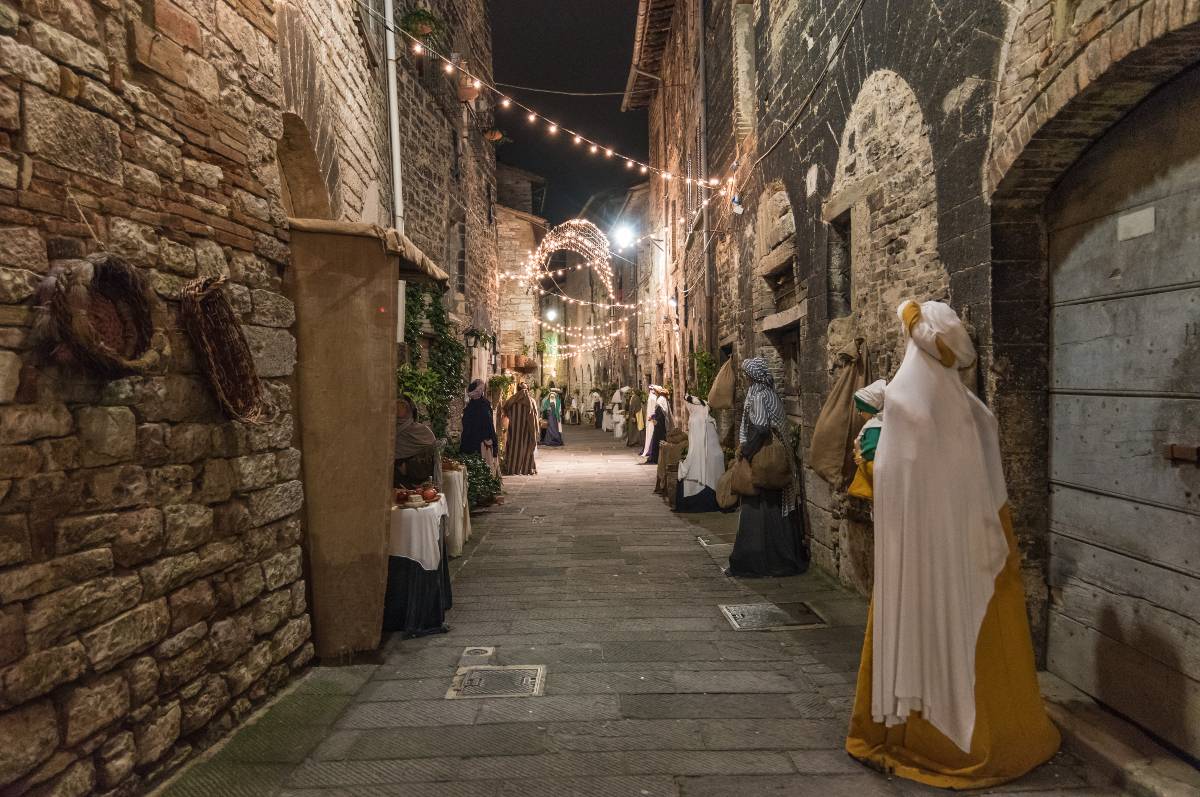Gubbio
- Village with walls
About the village
Among the most ancient cities of Umbria, Gubbio is certainly a fascinating country rich in historical charm and testimonies of medieval times. The village is located in the province of Perugia and is an essential stop of what is called "The Way of St. Francis", scenery and testimony of the life of the Saint in one of the most precious places in Italy.
Historical notes
The medieval village of Gubbio is one of the most characteristic and traditional of the entire region. In addition to the beauty and architectural richness that characterize the scenery of its landscape, Gubbio maintains unchanged its folklore and production traditions, offering the veracity of an inimitable land.
Its history stands out essentially during the fourteenth century, where the small village has been able to prosper and develop, but its origins would be much earlier, proclaiming itself as the oldest town in Umbria. Just in the Civic Museum of the village, in fact, it will be possible to admire the Eugubine Tables and the remains of the Roman Theatre, unique evidence of its ancient past.
Of important historical importance there is certainly the indissoluble bond with St. Francis of Assisi, becoming a stage of his journey: it is in Gubbio that the Saint made the famous meeting with the devouring wolf, entering into a pact of peace with the citizens. Besides this episode, the importance of Gubbio was also fundamental for the formation of the Saint himself, where he grew spiritually.
Architecture and monuments
The characteristic architecture of the village is certainly religious, as for most of the small towns nearby Umbria. Among the most important religious sites, we find the Cathedral of Saints James and Mariano, built for the two Christian protomartyrs in 1190. With a visit, you can admire its simplicity but, at the same time, its charm characterized by the lines and uses of typical Umbrian materials.
Another unmissable religious site of the village is certainly the Church of San Francesco, built in honor of the Saint in the thirteenth century; not to be overlooked are also two other minor churches, the Church of San Giovanni Battista and San Domenico, no less rich in historical charm and architectural beauty. In addition to the religious monuments, it will be possible to admire the beauty of the Praetorian Palace, located in one of the most important squares, that is Piazza della Signoria, but also Palazzo dei Consoli: both monuments are a clear testimony of the greatness of the city at the time of the fourteenth century.
The city of the madmen
The medieval village of Gubbio is known, throughout Italy and the world, also for a particular characteristic: it is called the city of the madmen. The origin of this nice epithet is not completely known, nevertheless to pass through the streets of Gubbio and not to make, for three times, the tour around the famous fountain of the city would really be a pity. By doing this nice madness, you can say that you are really a madman in the city of madmen: it brings good luck! Take advantage of the excuse to reach the famous fountain to get lost and let yourself be fascinated by the beauty of the medieval streets that characterize the village.
Patronal feast of Sant'Ubaldo
Another characteristic and important moment of the village Gubbio is surely the patronal feast dedicated to Sant'Ubaldo, the patron saint of the town. Just on the occasion of this day, the 16th of May of every year, there is a Corsa dei Ceri race just on the eve. The Cero is a kind of wooden machine that is used by ceraioli carrying it on their shoulders as a sign of joy, devotion and faith towards the Saint, and is carried to the top of the mountain.
Historical and culinary richness
In addition to the beauty and strangeness of the village of Gubbio, we must necessarily mention the goodness that distinguishes the typical cuisine of this town. Visiting Gubbio implies tasting the famous crescia al panaro: this dish is a kind of salty focaccia that should be enjoyed with the local cold cuts, but also with the friccò of lamb, chicken, rabbit and duck. Also the truffle, both black and white, is a well-known local product that can accompany even the simplest dishes, such as handmade tagliatelline, or on a simple fried egg.
Another characteristic product is the brustengo, a sort of bread that is fried and usually accompanies ham, sausage or bacon, enriched with onion and rosemary. Finally, to end the meal, you will also have to taste one of the typical sweets of Gubbio: the Ganascioni of the Suore di Santa Lucia, or crescent-shaped sweets that usually accompany a particular drink called Barcarola, a sort of barley coffee enriched by the presence of mistrà.
Why visit Gubbio
There are several reasons why the medieval village of Gubbio is worth a visit: first, its characteristic architectural beauty makes it unique, set in the typical Umbrian green and marked by the golden color of its walls. Of great importance is also the close bond that there was with St. Francis of Assisi, making it not only a fundamental stop for the life of the Saint but also for the current path of the pilgrim in his footsteps. Its beauty is also made unique by the culinary delights that you can taste, making perfect the inimitable atmosphere of a village rich in history, past, folklore and, why not, even bright future without neglecting the tradition.
Village of Gubbio
Municipality of Gubbio
Provincia di Perugia
Regione Umbria
Inhabitants: 31.651 eugubini
Center altitude: 522 m s.l.m.
Municipality
Piazza Grande, 9 - Tel. 075 92371
33.52 Kilometers from Gubbio
52.97 Kilometers from Gubbio
39.79 Kilometers from Gubbio
42.74 Kilometers from Gubbio
49.21 Kilometers from Gubbio
46.66 Kilometers from Gubbio
BY CAR
- From the North: take the A14 freeway and exit at Fano. Continue to Rome in the direction of Gubbio. Or take the A1 freeway and exit at Arezzo and continue to Città di Castello in the direction of Gubbio.
- From South: take the A1 freeway and exit at Orte in the direction of Perugia-Cesena until the exit for Gubbio. Or take the A14 freeway and exit at Ancona-Nord and continue to Jesi-Fabriano in the direction of Gubbio.
BY TRAIN
- Vico/Gubbio Moat Station
- Station of Perugia/Fontivegge
BY AIR
- Airport of Perugia
- Ancona-Falconara Airport
Sleep, eat, buy...
49.28 Kilometers from Gubbio
49.23 Kilometers from Gubbio
21.85 Kilometers from Gubbio
19.77 Kilometers from Gubbio
44.56 Kilometers from Gubbio
74.04 Kilometers from Gubbio
65.22 Kilometers from Gubbio
32.06 Kilometers from Gubbio
36.03 Kilometers from Gubbio
39.92 Kilometers from Gubbio
49.75 Kilometers from Gubbio
38.15 Kilometers from Gubbio

